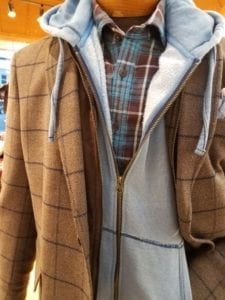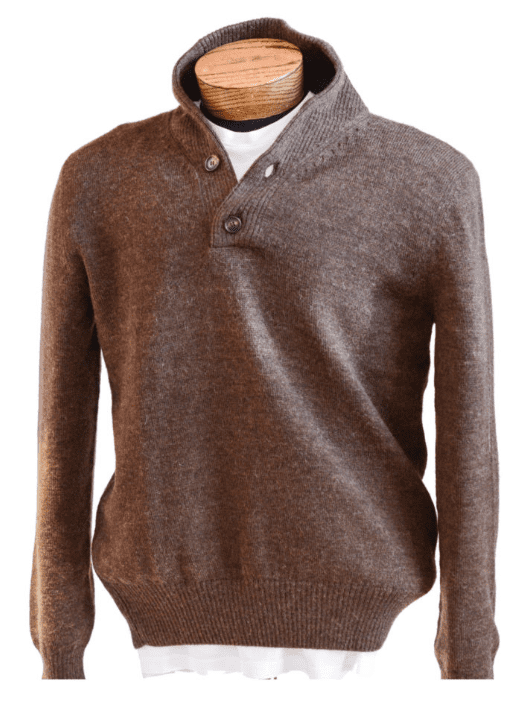Working Remotely? Menswear Must-Haves for a Professional Closet

Do you work remotely?
If so, not having to go into an office every day can lead to certain wardrobe habits (or freedoms – depending on how you want to look at it!). It’s easy to end up with a casual wear wardrobe when you don’t have to dress to impress every day.
However, what happens if you need to go into an office, meet with a client or represent the company at an event? For a lot of remote-based workers, this will trigger a certain amount of anxiety over what they’re going to wear.
Then there’s another potential hazard of remote work – the video meeting. You might think no one will notice your shorts if you’re dressed professionally on top, but what if you need to get up to fetch something during the meeting?
Every closet should contain a few well-made pieces that will be acceptable to wear when you need to make an impression. Here are a few tips for putting together a professional closet for the home-based professional:
Choosing the right cuts and fabrics
One thing we hear often is concern from people who want to make sure they get some longevity from their clothing. After all, if you don’t have to wear your professional pieces very often, you want to make sure that they aren’t dated or in poor condition.
A good strategy to follow is to choose clothing made from good quality fabrics and in more “timeless” cuts and patterns. That seasonal pattern in a bold color? Not a great idea if you don’t want to date your clothing when you wear it next year.
Part of the problem in recent years has been “fast, cheap fashion,” clothes that are made with a priority of quick production, rather than being built to last. If you don’t want your clothing to look worn within a short period, you need to look for better-quality construction and fabrics, and yes, you will usually pay more for them.
What makes for better quality? Here are some quick tips:
- Check the label for the fabric type. Cotton, wool, silk or linen are all extracted from plants or animals rather than man-made. There are a lot of synthetic choices out there, and some will add a certain quality when blended with the natural fabric (for example, stretch), however not all are created equally. For example, natural fibres usually improve with wear and laundering, whereas blends might stretch or shrink at different rates, altering the appearance of the garment.
- Touch the fabric. You’re looking for smooth, soft and substantial fabric rather than rough or overly thin. An exception to this is the density of the knit – a fabric can be thin and lightweight, but still have tightly-packed threads. Hold the fabric up to the light to inspect the density of the weave.
- For knits, you could try stretching the fabric just a little, in an inconspicuous spot. It should bounce back to its original shape – if it doesn’t, it won’t when you wear it either.
- Look at the seams. Stitches should be even and closely spaced, while the seam should sit flat to the fabric.
- Overall construction should be sturdy. For example, no fraying button holes. Dress shirts should have interfacing to create a stiff collar and cuffs, as should the waistband on dress pants.
- Get your clothes tailor-made, or fitted by a tailor. Professional clothes should always fit you well.
Remote wardrobe must-haves
If you’re based remotely, what you really need is a good “just in case” closet. This should consist of a few key pieces that will be appropriate for different situations, rather than a full professional wardrobe that someone who works in an office will need.
The basic remote professional wardrobe should have:
- A good quality blazer. This can be worn with seasonally appropriate trousers and a dress shirt, with or without a tie. Look for a tailored blazer in a good-quality fabric and timeless cut. (For example, look at the cut of this Canali blazer in crease-resistant wool). Get a classic color, such as black, charcoal, grey or navy.
- A deconstructed sport coat. What is this exactly? Deconstructed coats have no canvas layer or lining, whereas blazers with full construction have three layers. They have a softer shape and are very versatile for more “business casual” situations. Wear them with jeans and business casual accessories, or with dress trousers for more formal occasions. As an example, take a look at the casual sport coat ensemble below.

- Trousers. These should be in an updated fit (nothing baggy – you’re not in an 80’s movie!). Your trousers should also be in a seasonally appropriate fabric. In temperate climates you might get away with keeping one pair, but if you have large seasonal differences, you may want two pairs – one lighter and one heavier weight.
- At least two dress shirts. You can wear these with a tie for formal wear, or without if the situation is more business casual. These can be worn untucked with your jeans, or tucked in to formal trousers. In either case, shirts should be well-fitted and made from a crease-resistant fabric.
- A tie – something that will go well with your shirt and trousers.
- A nice outerwear piece. For example, you could consider a vest in the fall, or any other type of outerwear that is more appropriate for a professional setting than a weekend coat. A nice, knit sweater can also finish an outfit well – take a look at the Peru Unlimited Alpaca Wool sweater as an example.

How to keep your professional clothes looking good
You don’t always wear your professional clothes as a remote-based worker, so it’s important to take some steps to preserve the clothes when you aren’t wearing them.
Here are a few things you can do:
- Pay attention to the laundering tag! Many people are in the habit of throwing clothes into a regular wash cycle then tossing them in the dryer – a lot of clothes should never be put in the dryer.
- Launder washer-safe dark clothing inside out. This helps to preserve the dark shade.
- Extend the time between washes if possible. Outerwear doesn’t usually need washing after every wear, and washing is tough on clothes.
- Get suits, blazers or sport coats dry cleaned as needed.
- Brush off any particles that may be on your clothing. Hang it on a good-quality wooden hanger.
- Use a cloth cover. These allow air to circulate even if your clothing is stored.
Final thoughts
Even if you work remotely most of the time, you don’t want to be caught short when the need to be dressed professionally arises! It’s important to keep a few essential pieces that will take you from a meeting to an event.
Look for good quality cuts, construction and fabric over cheap, “fast fashion,” especially if you want to make the right impression when you do step out. Better quality clothing may cost you more, but it will also last you longer, especially if you have opted for classic styling.
Just a few key pieces in your wardrobe mean that you don’t need to worry about meetings (or those video calls!)

